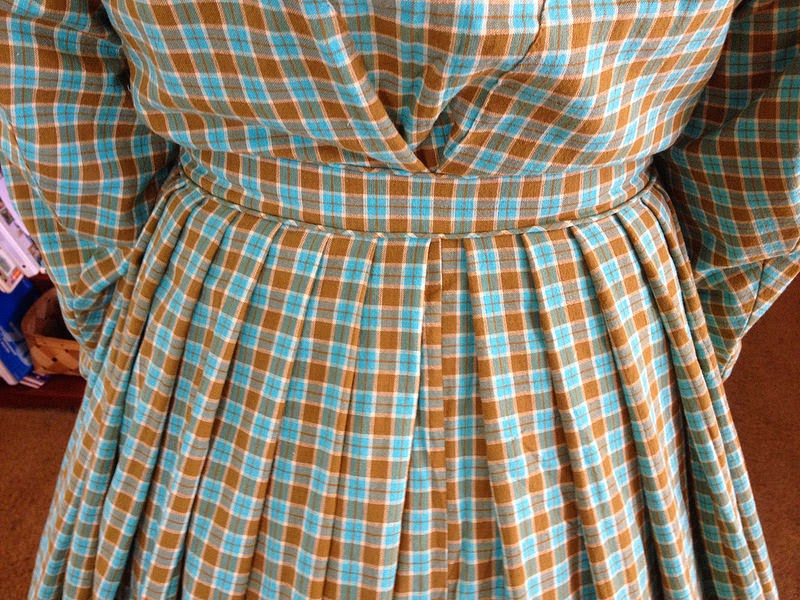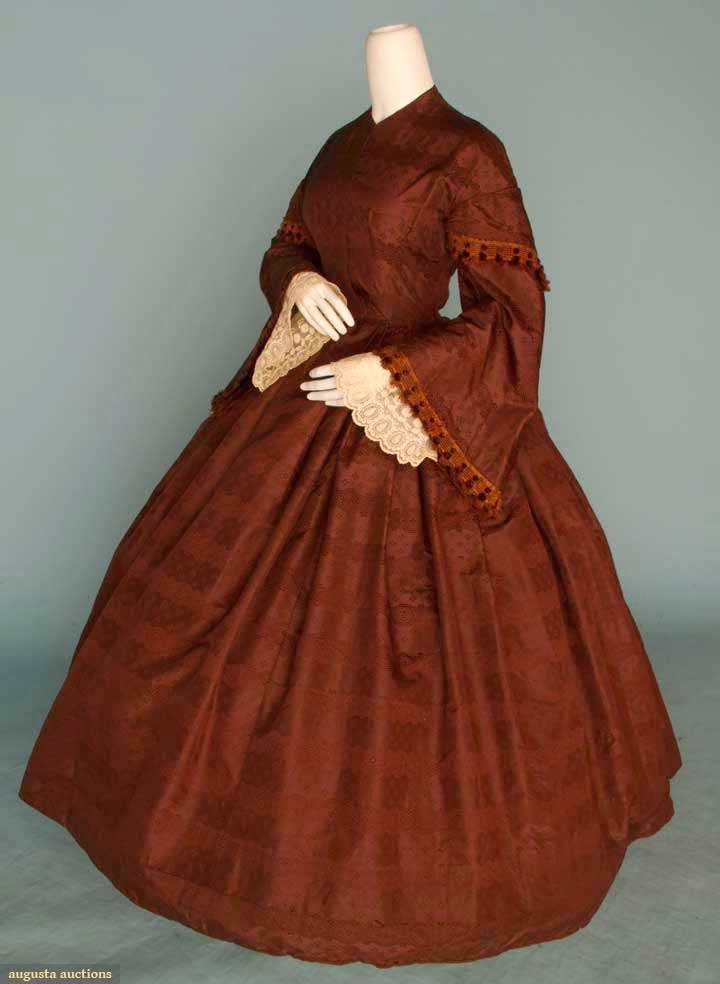Mom has needed her own Civil war dress for quite a while, so combining my new book the
Dressmakers Guide and the $25 gift card for Joanns I got for my birthday, I whipped up the dress in about a week. I was actually pretty slow and didn't try to work super hard, even though I had a deadline. I finished the night before, but I wasn't up til midnight!
The fabric is a turquoise and olive-colored homespun plaid from Joanns for $3 a yard. I think I used about 7 1/2 -8 yards. Somewhere in there.
Anyway, the longest part was the different mock ups. This was my first time draping a pattern, but it turned out pretty good and I managed to figure all of it out without running to Lizzie V for help!
The sleeves were a little trickier. They kept turning out huge, so finally I just cut it vertically trimming quite a bit off. I couldn't believe it, but by chance the top edge fit into the armscye so perfectly there wasn't any ease at all! (I was going for that). You can see below how the coat sleeves sort of turn toward each other.
The bodice in the front looks pretty good, I think. The back I spent a little extra time on by using a pretty nifty technique of folding the 'fashion' fabric (not the lining) over the lining into a crease, and then top stitching that crease down with tiny stitches so it looks like back is in 3 pieces. It definitely helps with the small waist look.
While that turned out cool, I really wanted a smooth back instead of a gathered back. There was quite a lot of extra ease, though, so I put a small inverted pleat at the back. That didn't do it all the way, so there are actually one pleat at each side seam, but you can't see that so much. I have plans to take out the side seams and the pleats, and spreading and cutting the back so it is smooth. But that is in the future. I have some pictures of the curved back detail, but I am having a horrible time uploading photos.
The skirt was super easy, that only took maybe 2 days, not rushing. This was my first time sewing a hem guard; I used fabric left over from a homespun apron. It was
way easier to sew it this way than blind stitching it. And by the time I was done, you couldn't see the stitches on this at all, anyway. The pleats were even easier. I love plaid, it made the whole process way easier because everything is already measured out. Instead of measuring I just kept counting the squares to make them even.
And this was also my first time whip stitching to a separate band for pleats. I took me a while to figure it out, but it was pretty easy and looks nice on the inside, too. It feels way stronger than the whip stitches holding gauging, and on the gauging I sewed it to a grosgrain ribbon which will eventually give out.
Lastly, I love hooks and eyes. They were way faster to sew to the front than buttons and holes, which both need to be hand-sewn.

















































